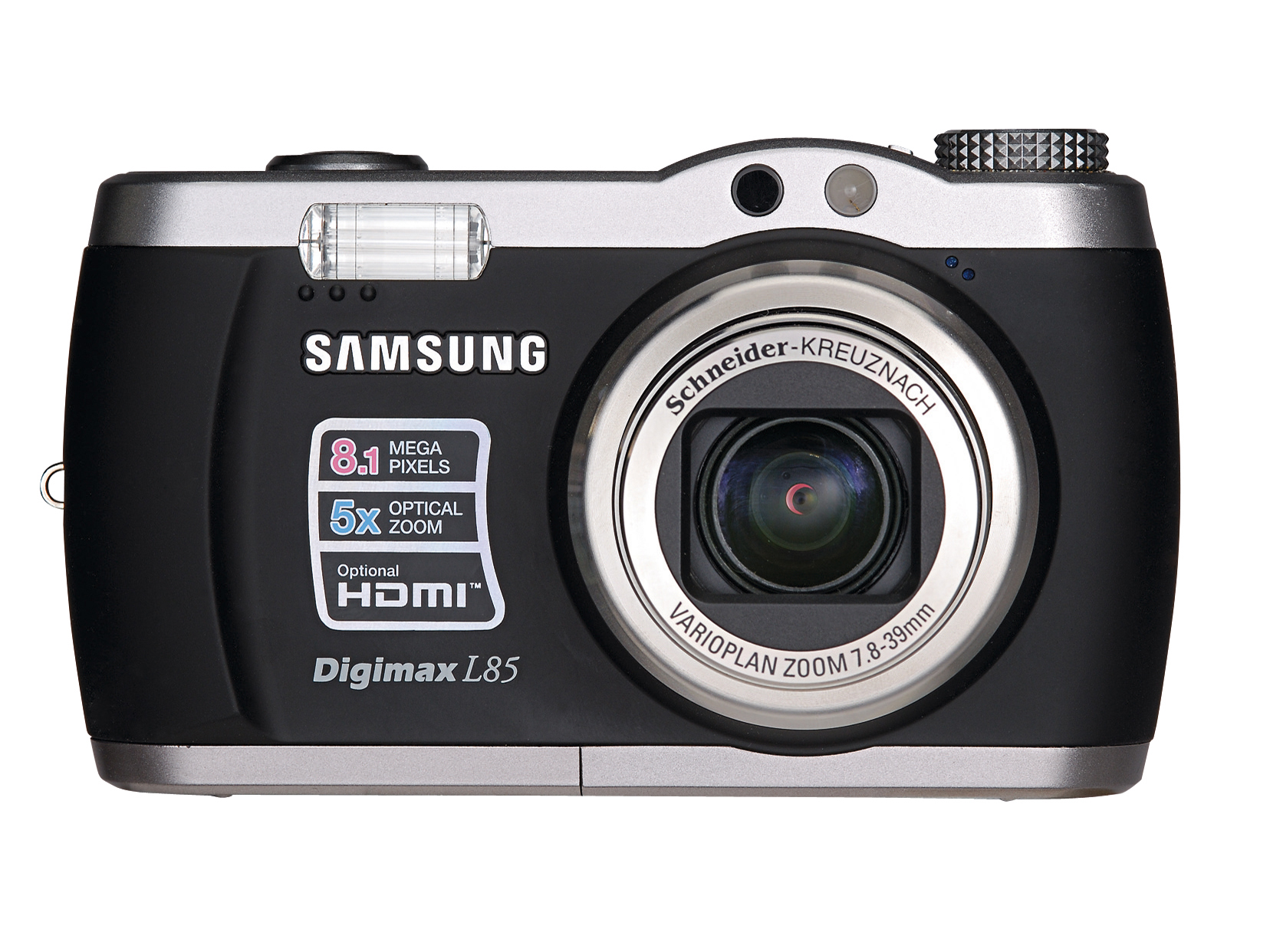TechRadar Verdict
HDMI aside, this is a stylish, solidly built camera capable of producing some great images
Pros
- +
HDMI connection
Plenty of scene modes and tools
Cons
- -
Poor controls and menu system
High chromatic aberration
Why you can trust TechRadar
In the cut-throat world of digital photography, there's no doubt that equipping a camera with a feature that no other manufacturer has thought of gives you an advantage - but only if it's genuinely useful to the user.
This is why the Fujifilm V10 didn't get us too excited just because it had some games - we've got PSPs for that. The Canon and Nikon Wi-Fi compacts, on the other hand, could just come in handy.
And so to the Digimax L85, the first camera with an HDMI connection. Yes, we know it's odd, but we can see the thinking behind it: if you have a flatscreen TV, it's the best way of getting your images up there.
But how many of you actually display your work direct from the camera? Aren't you more likely to stream images from your computer? Still, it's easy to get it set up and the on-screen results are highly impressive.
Beyond HDMI
However, as many TVs only have one HDMI socket you'll need to swap out your Sky HD box or whatever you already have in there. Even the widescreen mode, which knocks the resolution down to 5MP rather than the maximum 8.1MP, looks great in its native aspect ratio on a 32-inch LCD.
But it's important to look beyond the USP, and in the case of the L85 there are some interesting things to report. For starters there's that high resolution, which is as good as it gets in the current crop of compacts.
Here, it's backed up by a larger-than-life 2.5-inch LCD screen with an impressive 230,000 pixel count. However good that sounds though, in action the screen isn't as sharp as we'd like, and is a damn nuisance to use in bright light, where framing takes on a hit-and-miss feel.
Sign up for breaking news, reviews, opinion, top tech deals, and more.
The L85 is also at the top of the class in terms of optics, at least when it comes to getting up close to your subjects. The camera features a 5x optical zoom glassware from Schneider-Kreuznach, which gives a little bit more flexibility than the usual 3x optics. Although in the minus column there are more than expected levels of chromatic aberration.
Comprehensive compact
There's plenty of room for all these thrills because the L85 is pretty large for a compact. This makes for good handling, and the L85 is a solid beastie with a rubberised black finish, ideal for taking a firm hold.
The styling won't be to everyone's taste, and neither will the menu system and controls, which can be a real drag to navigate. For example, locating the white balance controls is a real thumb twister, and not great for making adjustments on the fly.
Having said that, the L85 rewards the more adventurous user with a collection of manual and creative options including shutter and aperture priority, a collection of scene modes and stitching and special effects tools.
Given time and patience, the L85 is capable of producing some excellent images, with bags of detail on offer from the 8.1MP sensor. The pictures have sharp, well-defined edges, but without too much of the nasty digital noise that some multi-megapixel cameras suffer from. This is especially true at the lower ISO ratings, although turn the screw much above ISO 100 and things start to deteriorate.
The Samsung is also good at judging exposure accuracy, and over the period of the test produced a respectably low number of unusable, overly dark or light shots. It does a great job with vibrant colours, and the brightest of hues are delivered in a jawdropping manner. However, on the downside this full-on approach can leave human subjects looking a tad flushed.
This camera is surprisingly good. Even forgetting about the novelty of an HDMI connection, the L85 has a good collection of features and is capable of producing highly attractive results. Shaun Marin
Tech.co.uk was the former name of TechRadar.com. Its staff were at the forefront of the digital publishing revolution, and spearheaded the move to bring consumer technology journalism to its natural home – online. Many of the current TechRadar staff started life a Tech.co.uk staff writer, covering everything from the emerging smartphone market to the evolving market of personal computers. Think of it as the building blocks of the TechRadar you love today.
